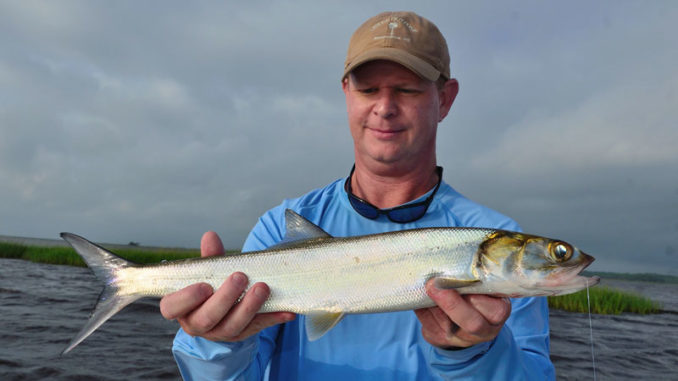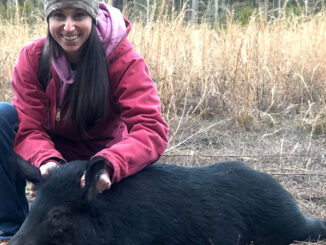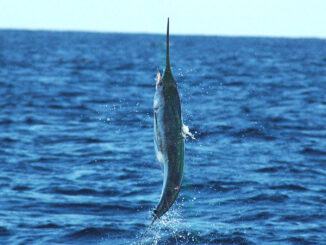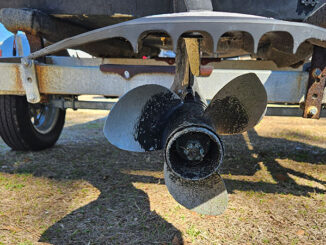
Ladyfish are often called the “poor man’s tarpon”
Ladyfish (Elops saurus) are long, cylindrically shaped fish that live primarily in tropical and subtropical waters. In the U.S., they are found along inshore waters along the Atlantic seaboard and the Gulf of Mexico. They are very tolerant of low salinity levels and sometimes travel up freshwater rivers.
These fish are usually silver in color, but may appear white or gray depending on the waters they inhabit. They have deeply forked tails and small scales that run the entire length of their bodies.
Ladyfish are related to tarpon and bonefish, and are often misidentified as either of those species, but most commonly as tarpon. Their mouths are shaped much differently than both species, however, and the lack of a long, filamentous dorsal ray sets them apart from tarpon. The scales of a ladyfish are also much smaller than those of a tarpon, and tarpon get much bigger than ladyfish.
When young, ladyfish are translucent and look like clear eels. These features are lost shortly after birth. They eat small fish and shrimp, with shrimp making up the majority of their diet when available. They have very fine, sharp teeth.
These fish are are not all females
Like tarpon, ladyfish spawn offshore, hatching huge numbers of eggs which float with the currents, usually ending up in inshore waters before hatching.
Anglers catch ladyfish on a variety of baits, most often live or cut pieces of shrimp. They are acrobatic fish, and are known for leaping far above the surface when hooked.They are usually released or used as bait for sharks or tarpon. The food quality of this species is quite poor, and very few anglers eat them.
Ladyfish are known in some areas as tenpounders. Other nicknames include poor man’s tarpon, lady tarpon, little tarpon, she-tarpon and she-fish. Contrary to their name, all ladyfish are not females. Adults average 2 to 3 pounds, or about 18 to 24 inches in length.
South Carolina’s state record 5-pound, 14-ounce ladyfish was caught in Charleston by B. Raver in 1994. North Carolina does not list the species in their saltwater records book.
The world record weighed 8 pounds and was caught out of Sepatiba Bay, Brazil in Feb. 2006.
_________________
Click here to read the species spotlight on mahi mahi.





Be the first to comment